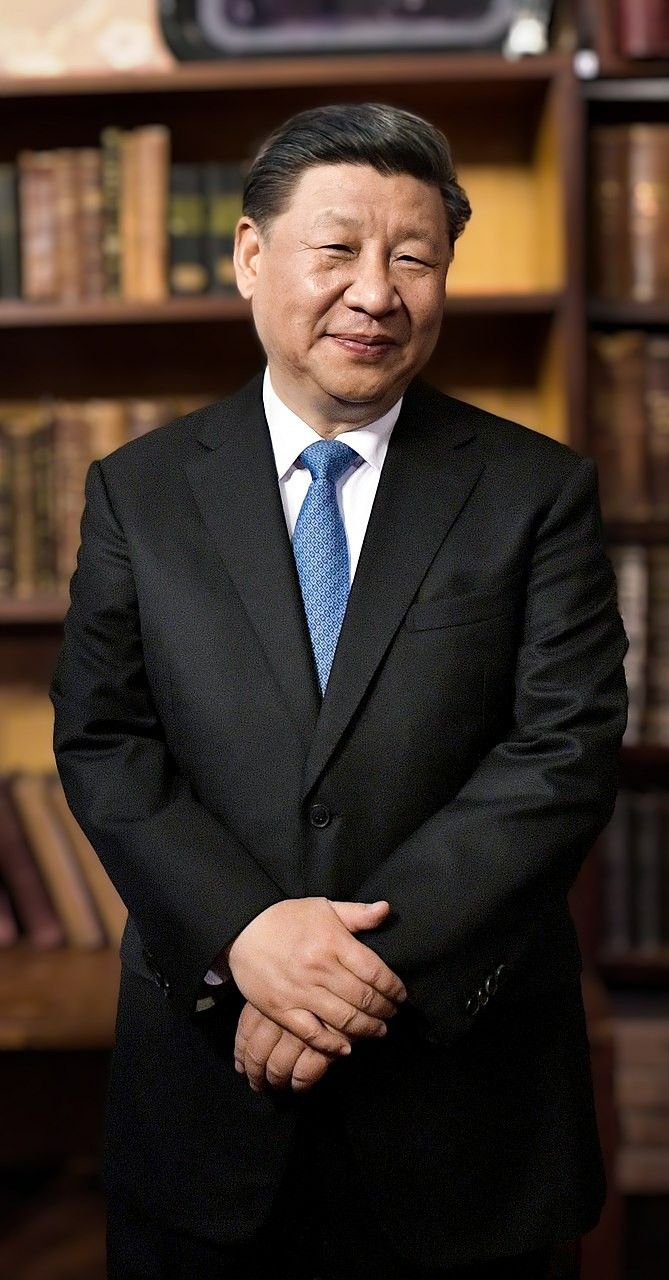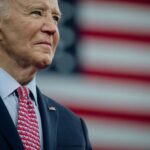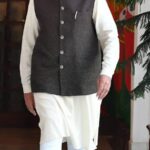Xi Jinping 2025: President of the People’s Republic of China
Full Name: Xi Jinping
Born: June 15, 1953, Beijing, China
Political Party: Communist Party of China (CPC)
Office: President of the People’s Republic of China (2013–present), General Secretary of the Communist Party of China (2012–present), Chairman of the Central Military Commission (2012–present)
Previous Offices: Vice President of China (2008–2013), Vice Chairman of the Central Military Commission (2010–2012)
Early Life and Education
Xi Jinping was born into a family with deep ties to China’s revolutionary history. His father, Xi Zhongxun, was a prominent communist revolutionary leader and a key figure in the Chinese Communist Party (CPC). As a child, Xi experienced both privilege and hardship. During the Cultural Revolution (1966–1976), Xi’s family fell from favor, and he was sent to a rural village in Shaanxi Province for “re-education” through manual labor. These years in the countryside exposed Xi to the struggles of ordinary citizens and shaped his perspective on leadership and governance.
Xi attended Tsinghua University in Beijing, one of China’s most prestigious institutions, where he studied chemical engineering and later pursued postgraduate studies in Marxist theory. This academic background in Communist ideology would go on to influence his leadership style as he moved through the ranks of the Communist Party.
Political Rise
Xi Jinping’s political career began in the 1980s, when he held several administrative positions in different provinces across China, including Fujian, Zhejiang, and Shanghai. Over time, he became known for his organizational skills, loyalty to the Party, and commitment to economic reforms. His rise was further bolstered by his association with powerful figures in the Party, especially his father, who remained influential despite his political setbacks.
In 2007, Xi’s rise to national prominence began when he became a member of the Politburo Standing Committee, China’s top decision-making body. This placement marked the start of his path to the nation’s highest leadership position.
In 2012, Xi Jinping was elected as the General Secretary of the Communist Party of China and Chairman of the Central Military Commission. These roles placed him at the helm of China’s political, military, and party apparatus. The following year, in 2013, he became the President of China.
Xi Jinping’s Leadership Style
Xi Jinping’s leadership is marked by an assertive and centralized style of governance. Under his rule, China has shifted towards a more authoritarian political system, with a stronger emphasis on the power of the Communist Party and state control over all aspects of society. Key elements of Xi’s leadership include:
- Centralization of Power: Xi has consolidated power in a way not seen since the era of Mao Zedong. He has positioned himself as a central figure in both the Party and government, ensuring that his authority is unchallenged. He has promoted loyalty among Party officials and purged his rivals, most notably in his anti-corruption campaign, which has also served to strengthen his political base.
- The Chinese Dream: Xi introduced the concept of the Chinese Dream in 2013, emphasizing the restoration of China’s greatness, national rejuvenation, and the achievement of the “two centenaries” — the 100th anniversary of the CPC in 2021 and the 100th anniversary of the founding of the People’s Republic of China in 2049. The Chinese Dream focuses on national pride, economic growth, and restoring China to its rightful place as a global leader.
- Ideological Control: Xi has placed a strong emphasis on ideological purity and has revived Maoist-style thought under the banner of Xi Jinping Thought. This ideology has become enshrined in China’s constitution, further solidifying his personal influence over the Party and the nation. He has emphasized loyalty to the Communist Party and ideological conformity as core tenets of China’s development.
- Strengthening the Role of the State: Xi has overseen a growing role of the state in the economy, reinforcing the idea of state capitalism. Under his leadership, large state-owned enterprises have been bolstered, and there has been a resurgence of government control over key industries such as technology, finance, and energy.
Domestic Policy and Governance
Xi Jinping’s leadership has led to sweeping changes in China’s domestic policies. His approach has focused on economic growth, political stability, and social control.
1. Economic Reforms and Challenges
Xi has overseen China’s continued economic rise, with efforts to transition the country from an economy driven by manufacturing to one focused on innovation, services, and consumption. Under Xi’s leadership, China has embraced the idea of a “dual circulation strategy,” which seeks to reduce reliance on foreign markets and boost domestic consumption and innovation.
Despite this progress, Xi’s government faces significant economic challenges, including slowing growth rates, the aging population, and the trade war with the United States. His administration has sought to address these challenges through the Made in China 2025 initiative, which focuses on technological advancement, and Belt and Road Initiative (BRI), a massive infrastructure investment program aimed at fostering global trade and boosting China’s influence abroad.
2. Social Control and Surveillance
Xi’s government has implemented sweeping measures to tighten control over Chinese society. The Great Firewall of China, which restricts access to international internet sites, has been expanded, and surveillance of citizens through the use of facial recognition technology, social credit systems, and extensive data collection has increased dramatically. These tools are used to monitor dissent and ensure compliance with state directives.
Xi’s government has also cracked down on dissent, including in Hong Kong, where a new national security law has been imposed, effectively ending the region’s political autonomy and freedom of speech.
3. The “Chinese Dream” and Nationalism
Under Xi, China has taken a more assertive stance on the international stage, with a growing emphasis on Chinese nationalism. This includes a more aggressive approach to issues like Taiwan, Hong Kong, and territorial disputes in the South China Sea. Xi has championed the idea of a unified China, seeking to reassert control over Taiwan and emphasizing Chinese sovereignty over disputed regions. His government has also pushed back against perceived foreign interference, particularly in the realms of human rights and democracy.
Foreign Policy and Global Influence
Xi Jinping has positioned China as a key player in global affairs, seeking to reshape the international order to reflect China’s growing power and influence. He has pursued a policy of economic expansion and diplomatic engagement, making China more assertive in global trade, security, and international institutions.
1. Belt and Road Initiative (BRI)
One of Xi’s most ambitious foreign policy initiatives is the Belt and Road Initiative (BRI), which aims to expand China’s influence by investing in infrastructure projects across Asia, Africa, and Europe. The initiative seeks to improve global trade networks and secure economic ties for China through the development of ports, railroads, and energy pipelines.
2. Strengthening Relationships with Russia
Xi has worked to cultivate a strong relationship with Russia, particularly in opposition to U.S. global dominance. The strategic partnership between China and Russia has focused on trade, energy, and military cooperation. This partnership has become even more critical in light of tensions between Russia and the West, especially with the ongoing Russia-Ukraine conflict.
3. China’s Role in Global Governance
Xi has advocated for multilateralism, asserting that China should play a more central role in shaping global governance structures. This includes participation in international organizations like the United Nations, the World Health Organization (WHO), and the World Trade Organization (WTO), where China seeks to influence policies and expand its reach. Additionally, Xi has emphasized China’s role in addressing global challenges such as climate change and public health.
Controversies and Challenges
Xi Jinping’s leadership has not been without controversy. His authoritarian style, combined with his push for ideological control, has sparked criticism from international observers and human rights organizations. Some of the most significant controversies include:
- Human Rights Violations: Xi’s government has been accused of committing human rights abuses against ethnic minorities, particularly in Xinjiang, where reports of Uighur Muslim repression, including forced labor camps and cultural suppression, have drawn international condemnation.
- Hong Kong Protests: Xi’s government has cracked down on pro-democracy protests in Hong Kong, stripping the region of its political autonomy and limiting freedoms once guaranteed under the “one country, two systems” framework.
- Taiwan Tensions: Xi has taken a hardline stance on Taiwan, asserting that reunification with the island is a priority for China. The growing military presence in the Taiwan Strait has led to increased tensions with the United States and its allies.
Legacy and Future
Xi Jinping’s leadership in 2025 will continue to have a profound impact on China and the world. He has consolidated his position as one of the most powerful Chinese leaders in history, and his policies are reshaping not only China’s domestic landscape but also its role on the global stage. With the Belt and Road Initiative, growing military influence, and assertive foreign policy, Xi is positioning China to compete with the United States for global leadership.
As Xi approaches his second decade in power, the direction of China’s future under his leadership will depend on how he navigates both domestic challenges and international relations. His vision of the Chinese Dream and his efforts to assert China’s global dominance will define his legacy as one of the most consequential leaders of the 21st century.











Hi there, i read your blog occasionally and i own a similar one and i was just curious if you get a lot of spam feedback? If so how do you prevent it, any plugin or anything you can advise? I get so much lately it’s driving me crazy so any help is very much appreciated.